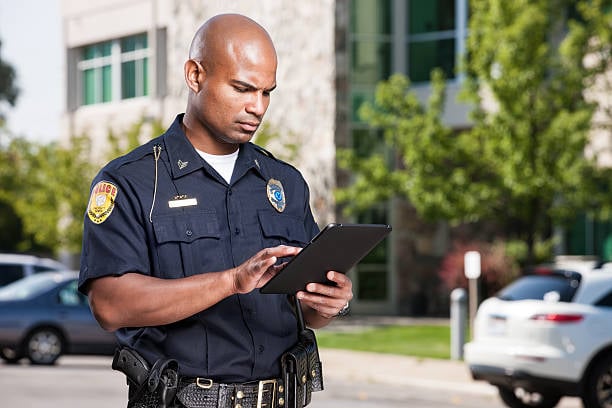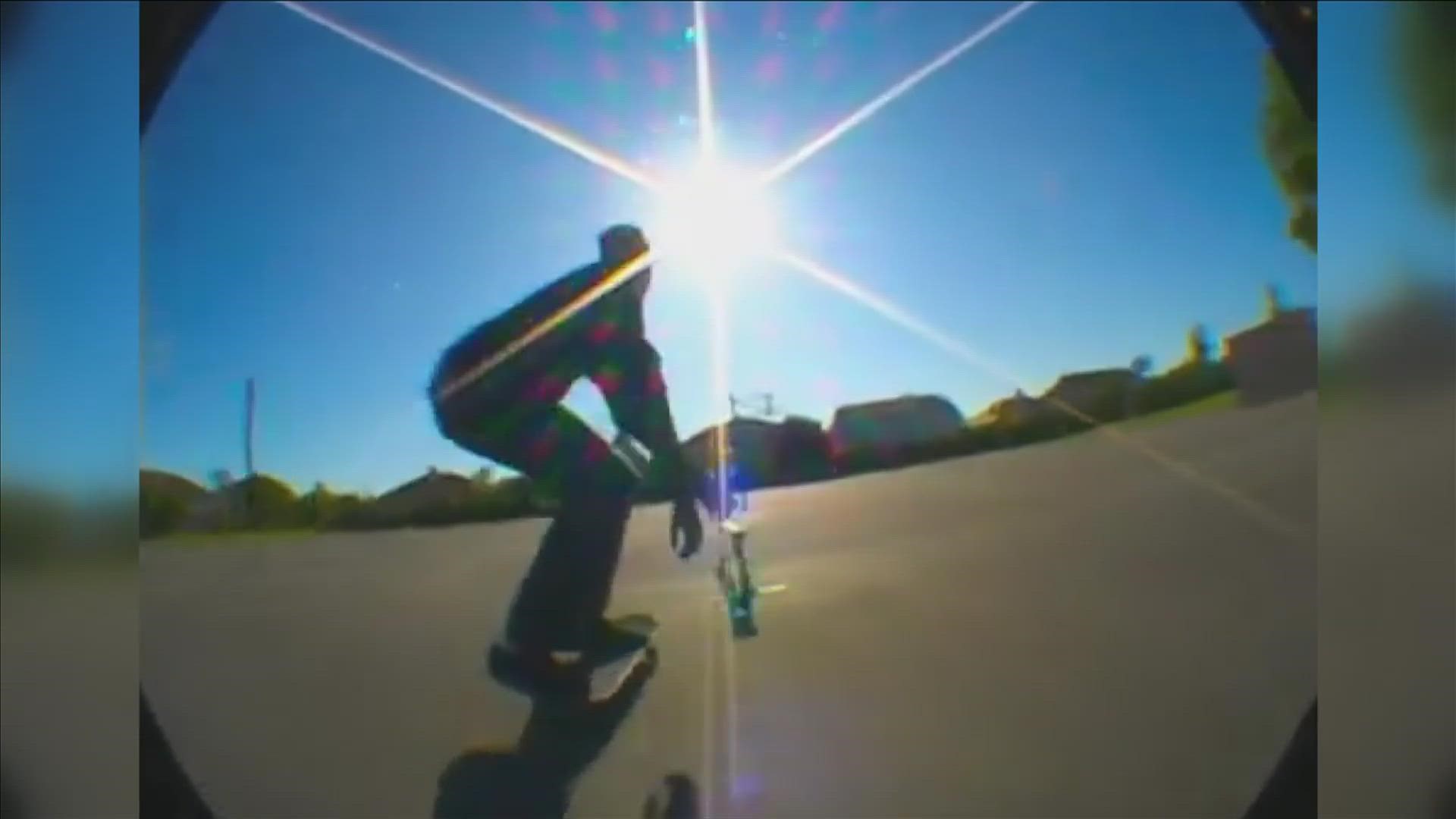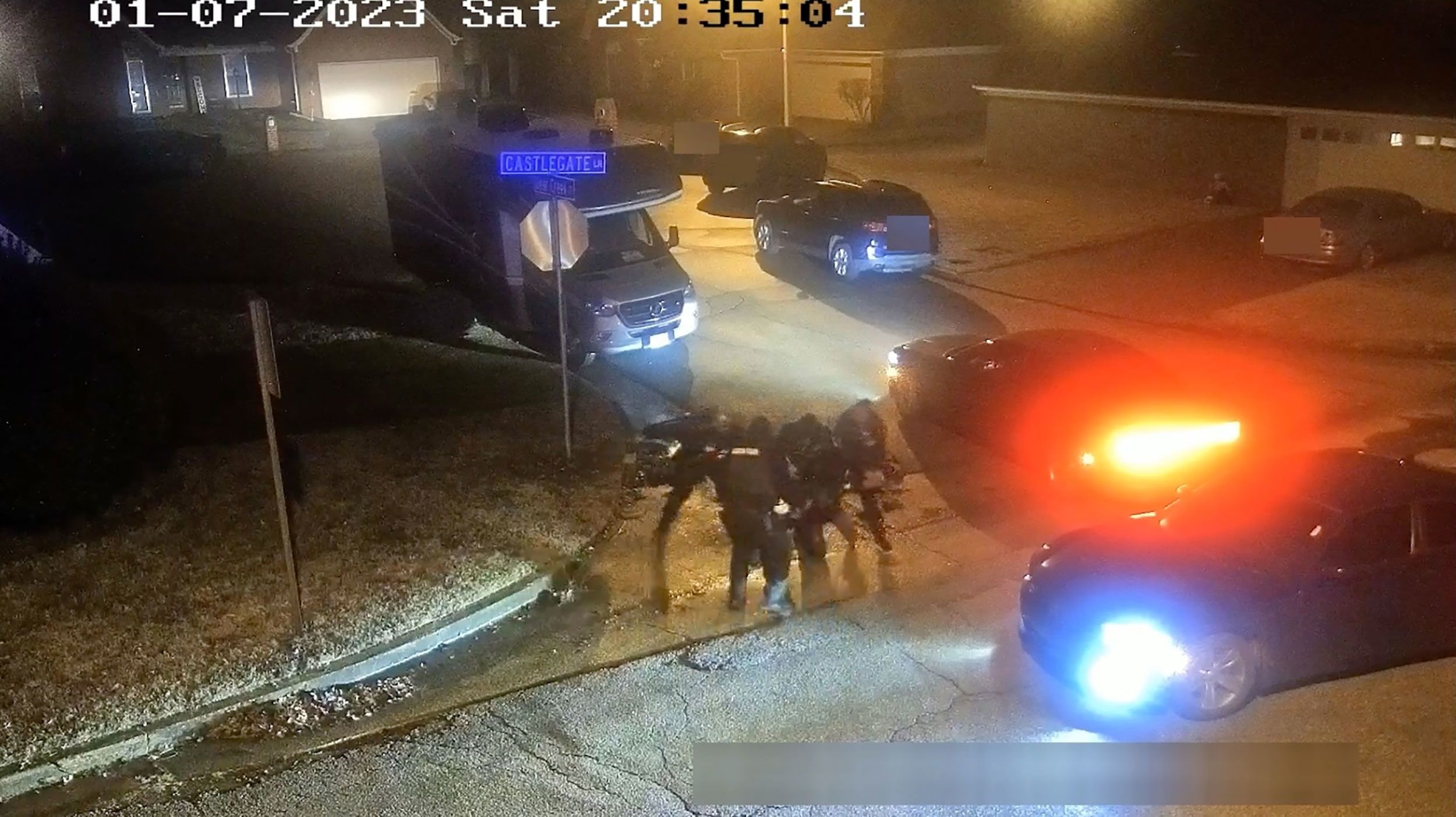Tyre Nichols was laid to rest on Wednesday, the 29-year-old Fedex worker who was pulled over for suspicion of reckless driving on January 7 by the Memphis Police Department. Rev. Al Sharpton gave the eulogy, Vice President Kamala Harris attended the ceremony, and both called for Congress to pass the George Floyd Justice in Policing Act.
Fleeing the scene, Nichols’ led the officers on an 800 meter chase to a second encounter where a pole-mounted surveillance camera on Castlegate Lane captured five officers collectively kicking him in the face; striking his back with a baton; tasing his chest and torso; punching and pepper spraying his face. Nichols complained of shortness of breath throughout the three minute encounter, repeatedly calling out for his mother.
Nichols was hospitalized in critical condition and died three days later. An autopsy commissioned by his family found that Nichols had suffered "extensive bleeding caused by a severe beating.”
Officers Tadarrius Bean (24), Demetrius Haley (30), Emmitt Martin III (30), Desmond Mills Jr. (32), and Justin Smith (28) — summarily charged with aggravated assault, kidnapping, misconduct, oppression and murder — were members of a 40-person special unit called SCORPION (Street Crimes Operation to Restore Peace In Our Neighborhoods).
Responding to 300+ homicides in 2021, Chief Cerelyn Davis of the Memphis Police explains, “This unit was created to basically target the hot-spot areas where we saw frequent aggravated assaults and high crime.”
"Yet the unit’s main mission appeared to be conducting mass pullovers in poor neighborhoods that are home to many people of color," says Decarcerate Memphis, a group pushing for accountability in the criminal justice system.
The undercover police officers, assembled in October 2021, often drove unmarked cars, randomly dressed in plainclothes, and were trained to target hotspots by predicting where crime scenes might occur. But on January 7, 2023 they went further.
Chief Cerelyn Davis and her scorpions actually created a brutal crime scene on Castlegate Lane.
Predictive policing is the mathematical, predictive analytics in law enforcement that identify potential criminal activity. There are four general predictions including crime, offenders, perpetrators, and victims. Using data from past crimes, including erroneous reports of crime, algorithms generate predictions that produce an automated outcome or strategy that typically sends an officer to the predicted time and place of a future crime.
Predictive policing gathers data to reach consensus on race, income, religion, age, sex, sexual orientation, time of day, time of the year, even weather patterns to infer when and where a crime is likely to occur. For instance, if a crime was reported at the Tobey Skate Park on Thursday after 6pm, an algorithm might tell the Memphis Police Department to dispatch officers to skate parks every Thursday evening. Naturally, police officers cruising skate parks on Thursday evenings cause suspicion. Moreover, the officers are predisposed with suspicion while on the errand of an algorithm.
Using an algorithm designed to predict earthquake aftershocks, UCLA professor Jeff Brantingham partnered with the Los Angeles Police Department (LAPD) in 2010 to create Predpol: a patented predictive policing software. While police forces have long used computers to map crime hotspots to inform policing, algorithms that provide real-time predictions have only proliferated in the past decade. By 2019, over 60+ police departments throughout the U.S. were using predictive policing software. Most were mid-size agencies of 100 to 200 officers, including the Memphis Police Department’s Blue CRUSH.

Memphis Police Department
Police departments that use predictive policing software like PredPol or Blue CRUSH are given printouts of jurisdiction maps that denote areas where crime has been predicted to occur throughout the day. Officers are expected to patrol these areas during their shifts, as the system tracks their movements via the GPS in their patrol cars.
Santa Cruz was one of the first cities in the country to experiment with the technology when it piloted, and in June 2020 became the first city in the United States to ban municipal use of predictive policing. After nine years, the city council voted unanimously to ban it over concerns “the software systemically perpetuated racial inequality.”
The first UK police force to use PredPol quietly ended the project after five years in 2018. “Predpol had a good record of predicting where crimes were likely to take place,” said Kent’s superintendent, John Phillips. “What’s more challenging is to show that we have been able to reduce crime with that information.”
Finally, the LAPD who piloted the program recently ended the project in 2020. An internal audit concluded, “there is insufficient data to determine if PredPol software helped reduce crime, though substantial evidence that it procures cultural bias.”
In 2020 the Fourth Circuit Court of Appeals handed down a decision which found predictive policing to be a law-enforcement tool that amounted to nothing more than reinforcement of a racist status quo. The court held that to grant the government exigent circumstances exemption would be a broad rebuke to the landmark Terry v. Ohio which set the standard for unlawful search and seizure. The court observes,
In a society where some are considered dangerous even in their own living rooms eating ice cream; or asleep in their beds; skating in the park; standing at the pulpit of their church; birdwatching; exercising; or walking to the store to purchase a bag of Skittles, its within their own communities—even those preselected to be 'hot spots'—where they're entitled to live free from persecution. Permitting unconstitutional governmental intrusions into these communities in the name of protecting them presents a false dichotomy.
It was Ernest Burgess, a professor of sociology at the University of Chicago, who was the first to trace parole recidivism in the 1920’s, utilizing police records to design an actuarial projection that identified, correlated, and predicted which prisoners were most likely to offend again. He is considered the father of predictive analytics in policing.
Identifying 21 measures associated with success on parole, Burgess gave each a numeric value. For example, an inmate lacking job skills would have a score of zero, while an inmate with relative job skills would have a score of one. He then added the scores together to obtain a scale in which higher scores predicted a greater chance of success on parole. He’s credited with creating the “Burgess Method of Unit-Weighted Regression.”
Burgess went on to apply that same reasoning in his 1939 book Predicting Success or Failure in Marriage. Identifying 21 measures associated with stability in marriage, Burgess claimed he could predict marital success or failure based upon a corollary of 21 variables. Widely criticized for creating a chart of variables that included neither love nor affection, the foundations of modern marriage, Burgess’s statistical approach to the institution of marriage was widely criticized by scholars and fell into obscurity during its first edition.
Notably, Ernest Burgess was never married.

Tyre Nchols 2022
While algorithms depend on data subsets to draw generalizations about black people in skate parks after dark, technology itself cannot reduce crime. It can only weaponize a person’s proximity to police action.
Across the country, skateboard communities have been holding memorials in honor of Nichols and his love for the sport.
Nichols’ mother, RowVaughn Wells, initiated a GoFundMe with a modest goal of reaching $10K for Nichols’ 4-year-old son, and creating a memorial skateboard park in the memory of her son. The account currently exceeds $1.4 million with donations from 35,000+ people across the world.
"We called them Thursdays with Tyre," says Nichols’ childhood friend, Austin Robert. The Tyre Nichols Skate Park will open in Memphis in due course, though would be wise to consider closing after dark.
Archives










